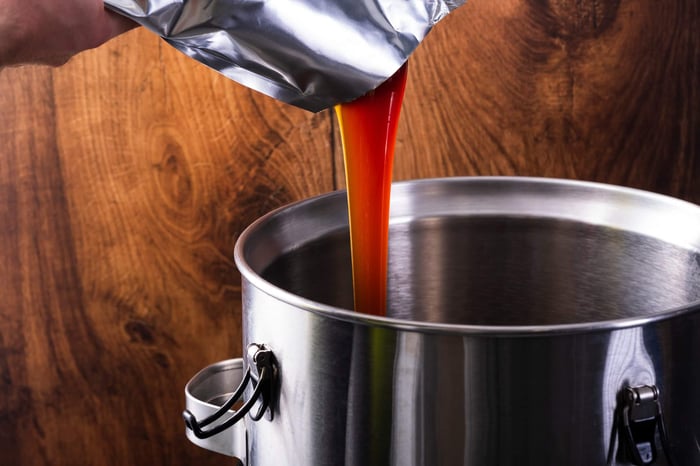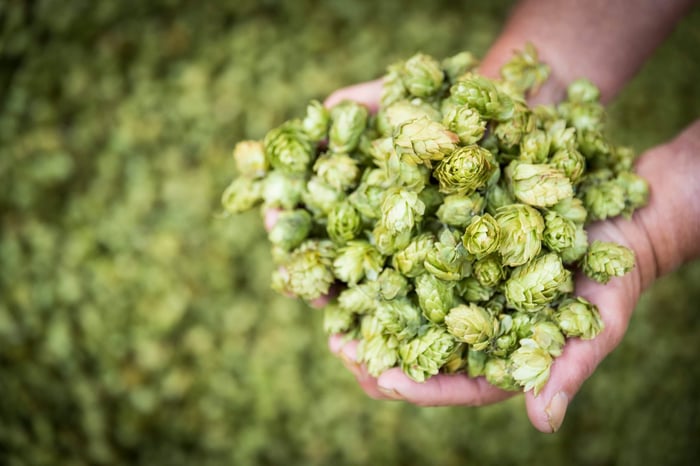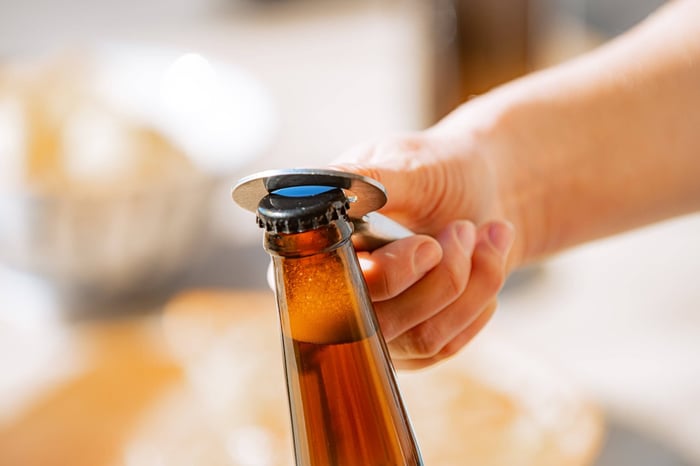Ever wondered how professional brewers consistently nail their target gravities? Here's a little secret we've learned over the years: malt extract isn't just for beginners. Smart all-grain brewers keep this versatile ingredient in their arsenal, and once you discover its potential, you'll wonder how you ever brewed without it.
What Makes Malt Extract Such a Game-Changer?
Think of malt extract as concentrated brewing potential in a convenient package. The American Homebrewer's Association defines it perfectly: "concentrated sugar extracted from brewing-grade malted barley." But that clinical definition doesn't capture what it really means for your brewing.
Available in two forms – liquid malt extract (LME) with its molasses-like consistency, and dried malt extract (DME) as a fine powder – both pack serious brewing punch. The type you choose depends on your specific needs and the grains used in production.
Here's a handy conversion that'll save you math headaches: 2.2 lbs of dextrose equals roughly 2.4 lbs of DME or 2.6 lbs of LME.
The Science Behind the Magic
Creating malt extract mirrors the early stages of all-grain brewing. Grains get mashed traditionally to create wort, then gentle heat evaporates the water, concentrating the sugars. Many producers use vacuum systems to remove excess water at lower temperatures, preserving delicate flavors.
Here's what might surprise you: extract beers regularly beat all-grain competitors at homebrew contests. We've judged enough competitions to know that technique trumps method every time.
Five Smart Ways All-Grain Brewers Use Extract
Bulletproof Yeast Starters
Creating healthy yeast populations separates good beer from great beer. Malt extract makes starter preparation incredibly straightforward compared to mini-mashing every time.
Your starter workflow becomes beautifully simple:
- Heat water and dissolve extract
- Boil for 10 minutes
- Cool to pitching temperature
- Add yeast and you're done
Target a specific gravity between 1.030-1.040 for optimal yeast reproduction. Unlike dextrose starters, malt extract provides all necessary nutrients naturally.
Pro tip from our brewing team: Always chill your starter in the fridge after fermentation. This drops the yeast to the bottom, letting you decant the beer and pitch just the healthy yeast slurry.
The Grainfather App includes a yeast pitch calculator that determines exact starter sizes and extract quantities needed.
Mid-Brew Gravity Rescue
Picture this: you're halfway through brew day when gravity readings show you're 7 gravity units short of your target. Don't panic – extract saves the day.
Say you're targeting 1.053 pre-boil gravity but measure 1.046 after sparging. That's 53 GU versus 46 GU – a 7-point deficit easily corrected with calculated extract additions.
High-Gravity Beer Adventures
Pushing alcohol boundaries often means longer boils or maxing out your grain bill. When your mash tun can't handle more grain or you don't want extended brew days, extract provides the solution.
Adding extract during the boil increases gravity without extending your brewing timeline or stressing equipment limits. It's elegant problem-solving.
Quick Brew Days with Part-Grain Brewing
Sometimes you want fresh homebrew but lack time for full all-grain sessions. Extract brewing keeps your pipeline flowing between major brew days.
Mix extract with specialty grains for complexity without the time commitment. You'll maintain brewing momentum while life gets busy.
Emergency Backup Plans
Smart brewers prepare for equipment failures or timing issues. Extract provides insurance against Murphy's Law striking your brew day.
Storage Wisdom That Protects Your Investment
Proper storage maximizes extract quality and shelf life. Store DME away from moisture and oxygen – it'll keep up to a year at 50-70°F.
LME pouches stay fresh for two years unopened. Once opened, transfer remainder to the smallest possible container, refrigerate, and use within three months.
Ready to Expand Your Brewing Arsenal?
Malt extract deserves respect in every serious brewer's toolkit. Whether you're crafting competition-worthy starters, rescuing gravity shortfalls, or brewing quick batches, extract delivers consistent results.
Want to dive deeper into brewing fundamentals? check out our complete Brewing 101 series for comprehensive techniques.
Questions about extract brewing? Drop us a line – we love talking shop with fellow brewers.
Grainfather Team










